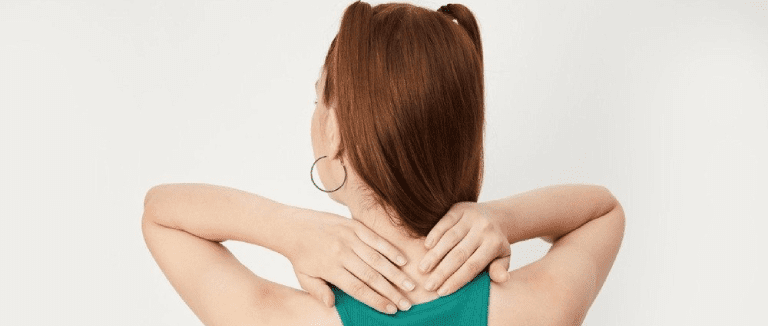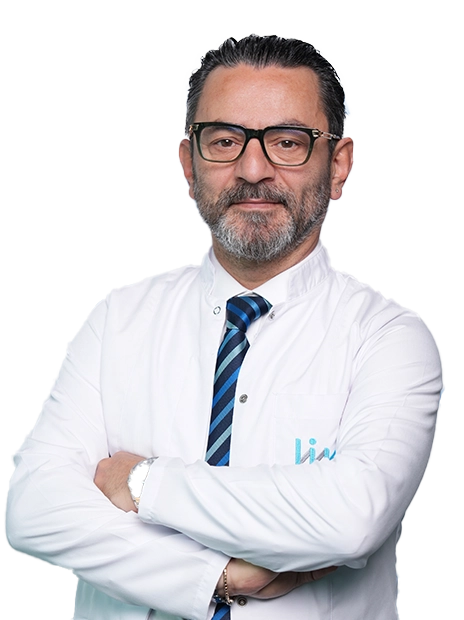Kyphosis: Types, Causes, and Spine Health Guide
The graceful curvature of the spine provides structural support and flexibility, yet deviations from its natural alignment can pose significant challenges. Among these spinal abnormalities, kyphosis is a prevalent condition that alters the upper back's curvature. This condition transcends mere physical appearance; it intertwines with the functionality of the spine, affecting daily activities and potentially influencing organ function. Exploring the nuances of it unveils its various forms, such as thoracic and cervical kyphosis, each holding distinct implications for the spinal structure.
Through this exploration, we delve into the importance of deciphering kyphosis”its types, causes, and implications emphasizing the significance of early detection and informed interventions for fostering optimal spinal health.

What is Kyphosis of the Spine?
Kyphosis of the spine manifests as an excessive outward curvature, altering thenatural alignment of the upper back. This condition results from various factors, including poor posture, developmental issues, degenerative conditions like osteoporosis, or even trauma. The spine's abnormal curvature impacts its structural integrity and affects posture and mobility. Individuals with it might experience a forward rounding of the upper back, leading to a visible hump, which can contribute to discomfort and limitations in movement.
This altered spinal alignment can cause muscles and ligaments to adapt, potentially leading to stiffness and reduced flexibility. Understanding the causes of itis crucial as it allows for proactive measures to address contributing factors and mitigate its impact on posture and overall spinal health.
What is Kyphosis? How is it treated? You can onnect with Liv Hospital in Turkey and speak to the experts to know more.
What is Thoracic Kyphosis?
Thoracic kyphosis refers to the natural curvature present in the upper back, specifically in the thoracic spine region. This inherent curve facilitates stability and supports the body's framework when properly aligned. The significance of thoracic it lies in its pivotal role in maintaining overall spinal health. This curvature safeguards vital organs housed within the chest while aiding in weight distribution and shock absorption during activities.
However, when this curvature becomes exaggerated or deviates from its natural form, as in cases of excessive it, it can disrupt the spine's equilibrium. Such disruptions may lead to visible changes in posture and functional limitations, potentially impacting breathing movement and even putting added stress on adjacent spinal regions.
You may discover the compassionate care and innovative treatments at Liv Hospital in Istanbul, shaping a brighter future for your spinal health.

What is Cervical Kyphosis?
Cervical kyphosis refers to an abnormal curvature of the neck within the cervical spine, which comprises the uppermost part of the vertebral column. Unlike the natural forward curvature (lordosis) present in the cervical spine, cervical kyphosis represents an atypical backward curvature. This deviation from the norm can markedly impact neck movement and function. Individuals affected by cervical kyphosis may experience restrictions in neck flexibility and discomfort due to the altered alignment.
Unlike other forms of it primarily affecting the thoracic region, cervical it can significantly impede daily activities involving head movements, such as looking up or turning the head from side to side. This aberrant curvature might exert pressure on the spinal cord and nerves, potentially leading to neurological symptoms.
At Liv Hospital in Turkey, we understand the challenges of kyphosis. You can allow us to guide you with compassion and expertise towards a more comfortable, mobile life.
What Is Scheuermann's Kyphosis?
Scheuermann's kyphosis is a distinct condition primarily affecting adolescents, characterized by an abnormal curvature of the spine during growth. This condition is distinguished by a specific structural change”vertebral wedging” that results in exaggerated it. Typically, the vertebrae in the upper back develop triangular shapes, causing a more pronounced curvature. Diagnosis of Scheuermann's kyphosis involves clinical assessment coupled with imaging studies, such as X-rays or MRI scans, to evaluate the degree of spinal curvature and identify vertebral wedging.
Clinicians often diagnose Scheuermann's based on criteria involving the degree of curvature, the number of vertebrae involved, and the presence of vertebral wedging. Recognizing this condition early is crucial, as timely intervention, including exercises to improve posture and sometimes bracing, can help manage its progression and mitigate potential long-term spinal issues.
If you are wondering, ˜What is a kyphosis', you can connect with us. We are happy to answer any questions you may have.
Causes and Risk Factors of Kyphosis
Kyphosis can result from a range of causes, both developmental and acquired. The most common type in adolescents, postural kyphosis, often stems from chronic poor posture”such as prolonged slouching or improper spinal alignment. Congenital kyphosis arises from abnormal vertebral development during childhood.
As people age, degenerative conditions like osteoporosis can weaken the spinal bones, increasing the risk of kyphosis due to compression fractures. Traumatic injuries or fractures to the spine can also alter its alignment and cause abnormal curvature. Additional risk factors include genetic predisposition, sedentary lifestyle, and inadequate nutrition, all of which can further compromise spinal health as degenerative changes naturally progress with age.
Lifestyle Modifications and Prevention
Making small, proactive lifestyle changes can greatly improve spinal health and help prevent complications from kyphosis. Good posture is essential”set up an ergonomic workspace, keep your spine aligned when sitting or standing, and take regular breaks to stretch and reset your posture. A targeted exercise routine that strengthens your core, back, and flexibility provides vital support for your spine and lowers your risk of abnormal curvature.
Prioritize bone health by getting enough calcium and vitamin D to help prevent osteoporosis-related kyphosis. Think beyond work: practice safe lifting techniques and avoid long periods of slouching or carrying unbalanced loads in daily life. By integrating these habits into your routine, you'll give your spine the best chance to stay strong and healthy.
* Liv Hospital Editorial Board has contributed to the publication of this content .
* Contents of this page is for informational purposes only. Please consult your doctor for diagnosis and treatment. The content of this page does not include information on medicinal health care at Liv Hospital .
For more information about our academic and training initiatives, visit Liv Hospital Academy
Frequently Asked Questions
What is kyphosis?
Kyphosis is a spinal condition where the upper back curves excessively outward, creating a rounded or hunched posture.
What causes kyphosis?
Common causes include poor posture, congenital spine deformities, osteoporosis, trauma, and degenerative spinal diseases.
What are the symptoms of kyphosis?
Symptoms may include back pain, stiffness, fatigue, visible rounding of the upper back, and, in severe cases, breathing difficulty.
Is kyphosis curable?
Mild cases can improve with physical therapy and posture correction. Severe forms may require bracing or surgery.
How is kyphosis diagnosed?
Doctors diagnose kyphosis through a physical exam and imaging tests like X-rays or MRI to assess spinal curvature.
Can exercise help kyphosis?
Yes, regular posture correction exercises and strengthening the back and core muscles can reduce symptoms and improve alignment.
When should I see a doctor for kyphosis?
Seek medical attention if you notice worsening curvature, pain, breathing issues, or nerve-related symptoms.


